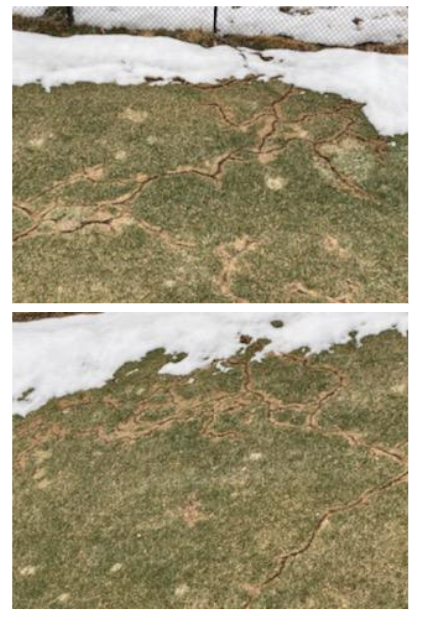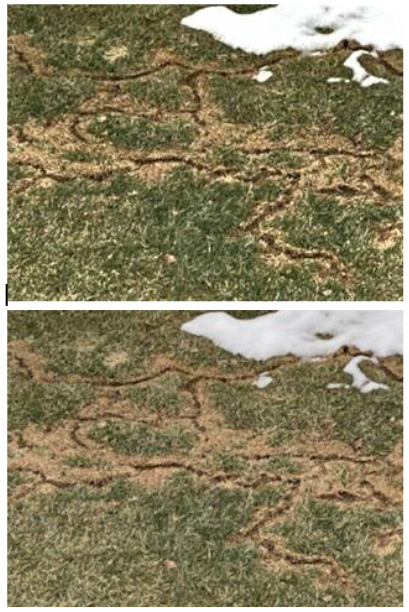1 minute read
Voles
The prolonged snow cover has caused damage to many lawns with snow mold and vole damage, widespread throughout the area.
Voles are small mammals like field mice. Deep snow, drifts, and piles provide a protected habitat for these pests throughout the winter. The longer weather conditions allow habitat and food, the more pronounced damage will be.
With the snow melted, vole damage presents as tunnels, tracks or trails that zig and zag throughout the affected area. Sometimes, these areas are confined to small areas and other times damage can be widespread. When the snow melts away the damage can be alarming but, in most cases, the damage is superficial. A little hand raking and some patience is usually all that is required for repair.
Voles chew the grass off at the crown to leave a trail that looks depressed in relation to the surrounding grass. Voles seldom disturb the soil, so repair efforts are usually minimal in already healthy turfgrass. Repair begins with raking through the area to remove the dead grass, thatch and droppings that may accumulate throughout the “trail system”. As soil warms, new growth will emerge from the intact root system below and these trails will fill in with grass as before. Additional fertilizing and watering will aid in recovery of severe damage.
Unlike moles, vole trails are usually above the soil surface and in the thatch layer despite the appearance of being depressed. These depressions will fill in with thatch that accumulates and will serve to protect the base of the new shoots. Being too eager and adding soil is likely to create bumps and unevenness that will be worse in the end. Be patient for the best outcome and things will be as they were before.
https://ag.umass.edu/turf/fact-sheets/vole-damage-to-lawns
extensionpubs.unl.edu/publication/g887/2011/pdf/view/g887-2011.pdf



